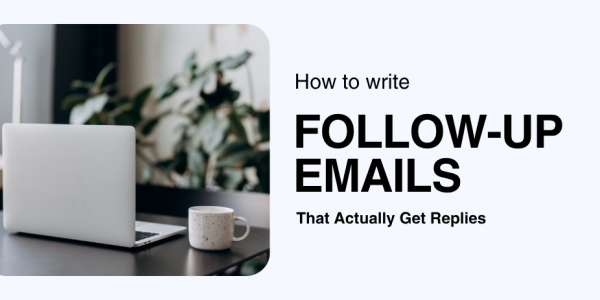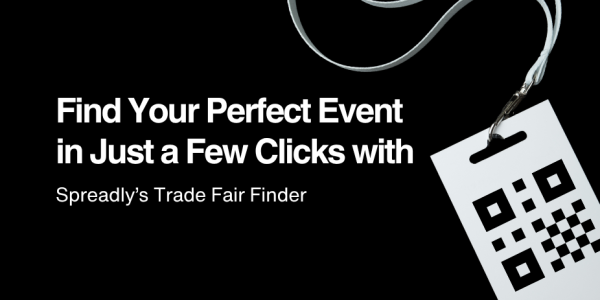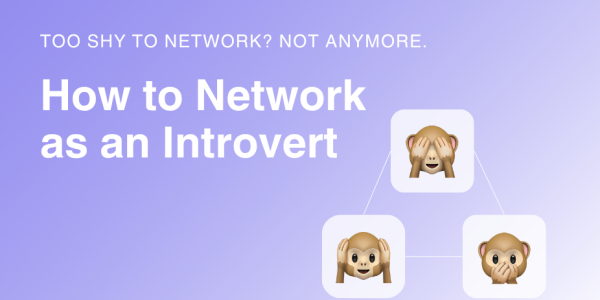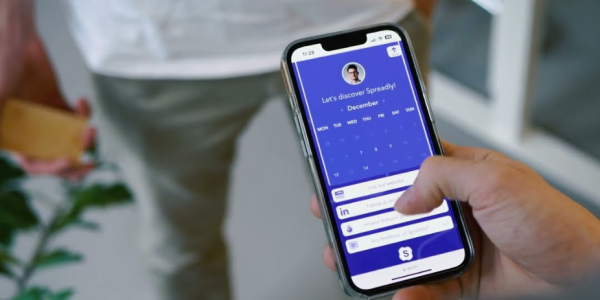How to Prepare for Networking Events Like a Pro (Tools, Mindset & Strategy)
3 minutes
17th of July 2025
In this article:
- TL;DR
- How to Prepare for Networking Events Like a Pro
- Start with the Right Mindset: Less Is More
- Do Your Homework Before the Event
- Use Tools to Build Your Target List
- Build a Short, Personalized Pitch
- Go Digital: Make Sharing Effortless
- Don’t Forget the Follow-Up
TL;DR
Networking is less about talking to everyone. It’s about doing research before the event, setting clear goals, identifying the right people to meet, and preparing personalized introductions. The right mindset, tools and strategy will help you show up prepared, save time, and connect meaningfully and not randomly.
How to Prepare for Networking Events Like a Pro
Showing up at a trade fair, conference, or industry meetup without preparation is like playing darts blindfolded. You might get lucky, but you’ll probably miss your target. Great networkers know it’s never about quantity, but about quality, strategy, and attitude.

Start with the Right Mindset: Less Is More
Many professionals think networking means exchanging cards with dozens of people. But the real power comes from building a few genuine connections, the kind that can lead to collaborations, partnerships, or sales conversations later.
Instead of planning to “network with everyone,” decide in advance what success looks like for you:
- Do you want to meet three decision-makers in your industry?
- Are you looking for agencies who might become partners?
- Or do you want to introduce your product to five key prospects?
Setting clear, realistic goals keeps you focused and makes your conversations more intentional.
Do Your Homework Before the Event
Preparation is where most people skip and where you can stand out.
Research the event agenda, keynote speakers, exhibitors, and guest list (if available). Look up the companies you care about on LinkedIn. Try to identify specific people you’d like to meet and learn a bit about them: what they do, recent projects, or shared connections.
Knowing these details helps you start conversations naturally.

Use Tools to Build Your Target List
If you’re going to an event, the right tools can make your preparation easier. We built a trade fair finder tool to help you with the research. With this tool you can:
- Search upcoming trade fairs worldwide by event name, industry, or location
- Filter by over 100 industries (from tech and SaaS to agriculture, chemicals, aerospace, and more)
- See details about each event: location, dates, estimated visitors, and exhibitor numbers
- Even check nearby hotels and accommodations nearby.
Instead of guessing which events matter, you can strategically choose where to show up and who to target there.
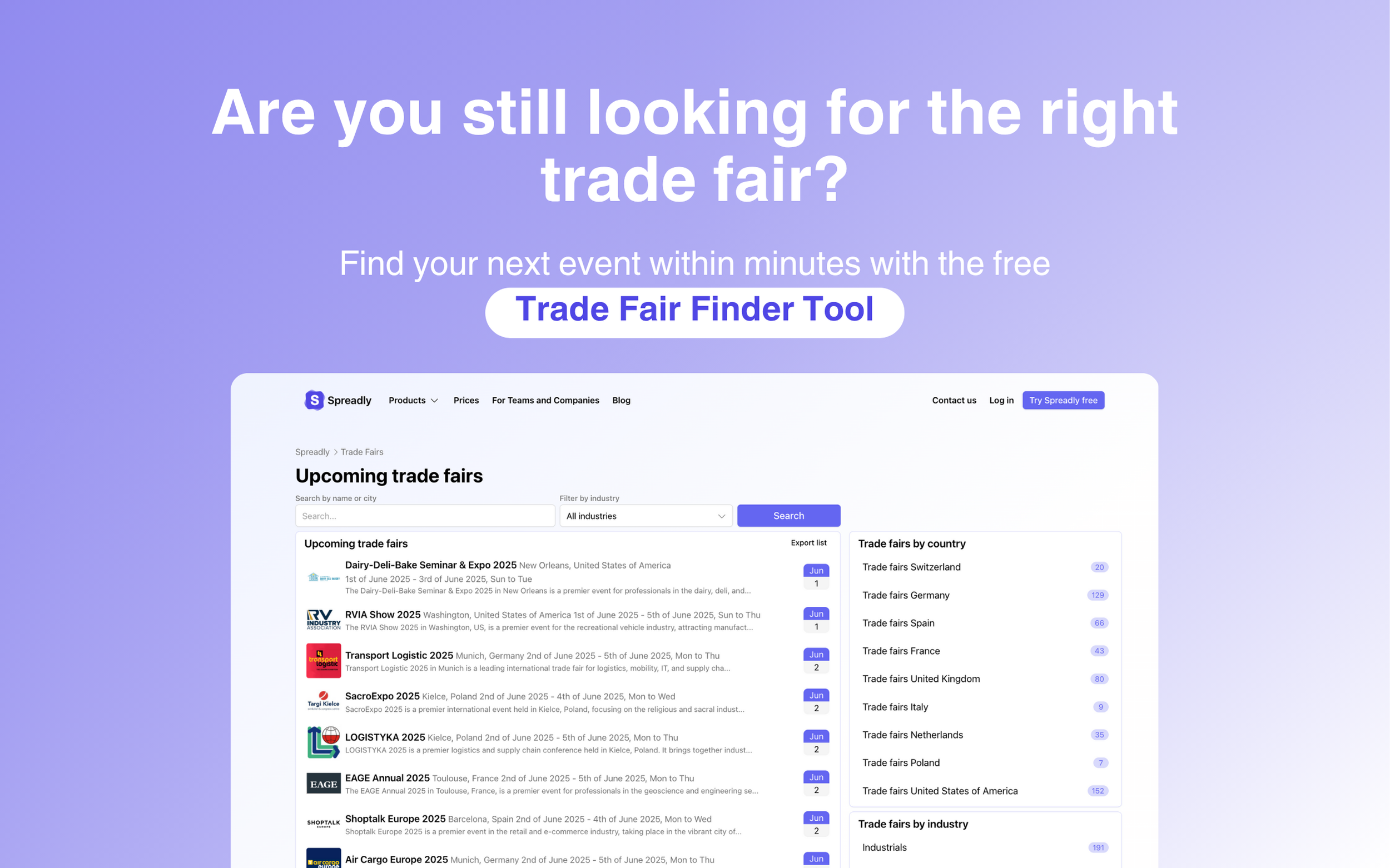
Build a Short, Personalized Pitch
Once you know who you’d like to talk to, prepare what you’ll say when you meet them. Your pitch shouldn’t sound like a sales script, but feel like a natural introduction that shows why they should care.
Example:
“Hi, I’m [Your Name], and I help [type of companies] do [specific benefit]. I saw your team is expanding into [area]. Maybe there’s a way we could support that?”
Keep it conversational, but be ready to explain your value in one or two sentences.
Go Digital: Make Sharing Effortless
Carrying a stack of paper business cards is old-school and most get lost or tossed away. Instead, use a digital business card:
- Share it instantly via QR code or NFC
- Automatically capture the recipient’s contact details
- Personalize follow-up emails later
- Update your info anytime without reprinting cards
Tip: If you’re curious how this works, see how Spreadly helps teams and professionals share smarter.
Don’t Forget the Follow-Up
Preparation doesn’t end when the event does. After the event, quickly follow up — ideally within 24–48 hours, while the conversation is still fresh. Thank them for their time, share something valuable (like a link or resource), and suggest a next step like a short call, coffee chat, or demo.
If you’re curious about how to write follow-up emails that actually get replies, check out our guide on How to write follow-up emails that people actually respond to. In it, we share practical tips, proven subject lines, and copy-paste templates to make your outreach feel personal — not spammy.
Professional networking isn’t a numbers game. It’s about doing your homework, targeting the right people, and making each conversation count. With the right mindset, preparation, and tools, you’ll walk into every event confident, clear, and ready to connect.
Ready to level up? Try Spreadly’s digital business cards and never lose a lead again.

